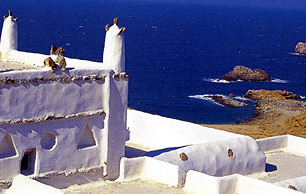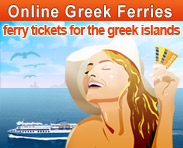Mykonos Attractions

Lady Paraportiani
One of the loveliest beaches on the island, are pale golden sands and emerald green water, has taken a new lease on the glory days of the 80's and since last year is once again in the limelight, attracting literally all the celebrities on the island. This beach is almost exclusively Greek, and a favorite with both older socialites and younger initiates. There are beach umbrellas, wooden (finally) loungers, the best beach service on the island, a waiting list for August week - ends and extremely stringent face control - the result being the most unmixed public anywhere on the island.
Last year, Kostas Angeletaki's famous taverna was taken over by Zannis Frantzeskos, and renovated from stem to gudgeon. N'AMMOS, with its exceptional service, refreshing cocktails on the beach, new menu and mainstream music, was the point of reference last summer for those who wanted to be right in the swing of things. This year Zannis is trying to outdo himself, and has raised the bar higher than ever.
A pier for the rubber dinghies, from the yachts moored off shore will relieve the maritime traffic jams of July and August, while by arrangement with the Ioannidis brothers of Belvedere the little bar beside the restaurant will be serving finger food and the famous Nobu cocktails right to your beach chair. (4 km from Hora).
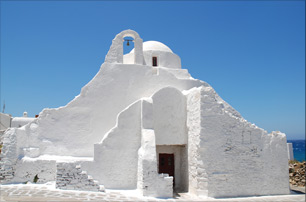
Windmills
Windmills circular structures topped by a conic wooden roof, are another integral feature of Mykonos' vernacular architecture. Of the 16 windmills that existed on the island in the past, one (that of Kastro) was used to supply the island in times of need.
The windmills located in the Apano Myloi site or in Ano Mera mainly served the needs of the rural inhabitants, while those in the Kato Myloi were used to grind cereals. It is perhaps worth noting that the mills were operated cooperatively. Today a good number of windmills have been restored. Some of them, such as the Bonis Mill, operate as museums while other have been converted into houses.
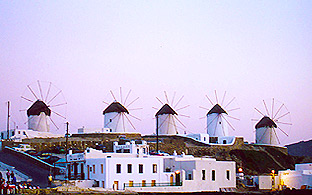
Little Venice
Undoubtedly the most beautiful part of Hora is the Little Venice, or in Greek the Venetia district, south of Kastro, with the captain's houses built when Kastro expanded at the end of the 17th century. The doors of the houses allowed the captain's direct access.
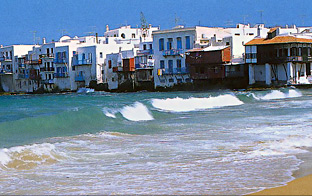
Petros the pelican
Yes, Mykonos Island has also a mascot... called Petros (Greek name of Peter) and is a sweet pelican. He wanders around the neighborhoods of Mykonos town, but his favorite place must be the port of Hora, because usually he can be found there. He is feed by locals and tourists, young and old ones and is always ready to get photographed-alone or with any human friend! But on Mykonos things are never simple: the truth is that there are now three pelicans on Mykonos - one of these a gift made by Jackie Kennedy - but none of them is called Petros!
The original Petros arrived on the island after a storm in the mid '50s suffering from an injury. After his recovery Petros was adapted to island life and remained here, for many years serving as Mykonos' mascot. He died in 1986. His role has been successfully performed by three other pelicans (perhaps operating a shift system!!) called Irini, Nikolas and Petros Junior. Anyway due to the fact the majority of the island's visitors are not away of this story, in case you see one of them go on and call him Petros -he won't mind, do not worry!
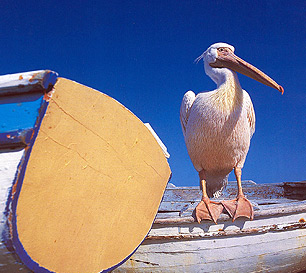
Dove Cotes
Dove cotes constitute a characteristic example of Mykonian architecture. They are structures built by folk artisans, often richly decorated (with lozenges, suns, triangles, stars, cypress, birds, and trees). Many dove cotes are still being used to breed doves.
More modern structures constitute supplementary decorative features on many houses. We also encounter dove cotes on other Cycladic islands, such as Sifnos, Adros, Tinos and Naxos.
